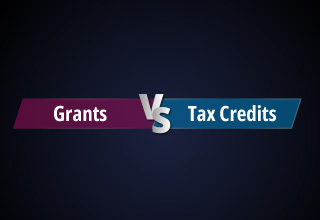Loss-making SME? Assistance from R&D Tax Credits can help boost your cashflow
If your business is struggling with cash flow, your research and development programme is probably the last thing on your mind.
But what you may not realise is that the tax relief you get for R&D activity could be the vital lifeline you need to keep the money coming in.
A lot of firms are investing in R&D, but many don’t realise that the activities they are already carrying out could generate a sizeable tax break that could be re-invested back into the business.
The UK government has set aside an annual budget of over £2 billion in a fund that offers tax relief to small and medium-sized companies (SMEs) undertaking R&D.
Many companies are already investing in R&D, but new start-ups may find they are burning through their initial capital very quickly – especially those in the tech and manufacturing sectors.
So, extra money for activities that they are already carrying out could be a godsend. In some cases, the difference between keeping the lights on and a business having to close.
Even if your company is making a loss and doesn’t have corporation tax liabilities, you can make retrospective tax relief claims based on the last two completed financial years.
Additionally, if your SME is in a tax loss position, you can surrender part of the loss attributable to the R&D expenditure for a cash payment.
At the moment, the amount of credit given is 14.5% of the relevant expenditure and the company must forgo the tax losses.
What does this mean in a real-world scenario? Consider ‘Company A’:
- Making a total loss of £100,000, but has qualifying R&D expenditure of £50,000
- Scheme allows for R&D expenditure to be uplifted by 130%, giving £65,000 additional enhancement plus the original £50,000 (total of £115,000)
- Refund on R&D activity is 14.5% of £115,000
- Loss-making SME A receives £16,675 cashback through their R&D tax claim – this is the equivalent of 33.35% of the R&D spend (so 33.35p/£1 vs 26p/£1 under profit making)
- Balance of £50,000 of unrelieved losses is carried forward as a normal trading loss
This represents a considerable benefit for the company, and it can now reinvest and move forward.
If a business has incurred capital expenditure in the year, the company can consider disclaiming capital allowances for that year, in order to use the loss created by the R&D tax relief claim. The capital allowances can then be claimed in a future financial period.
The important thing is that there has to have been qualifying spend on R&D during the year under review.
Looking to the future, companies that continue to innovate and take risks can potentially claim the R&D tax credits every year.
Not only does innovation help a business to stand out from the crowd, boosting its competitiveness, but R&D tax credits provide SMEs with steady incremental cashflow and, more importantly, the incentive to pursue new innovative ideas.






